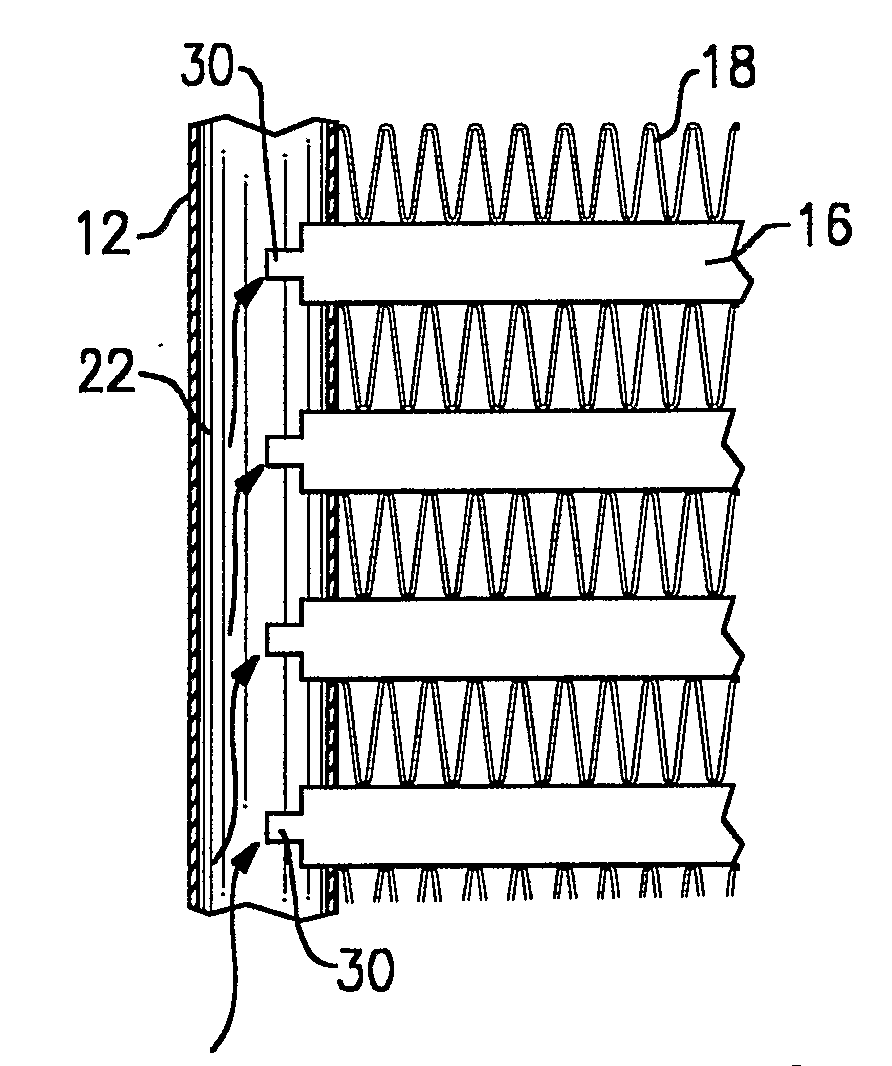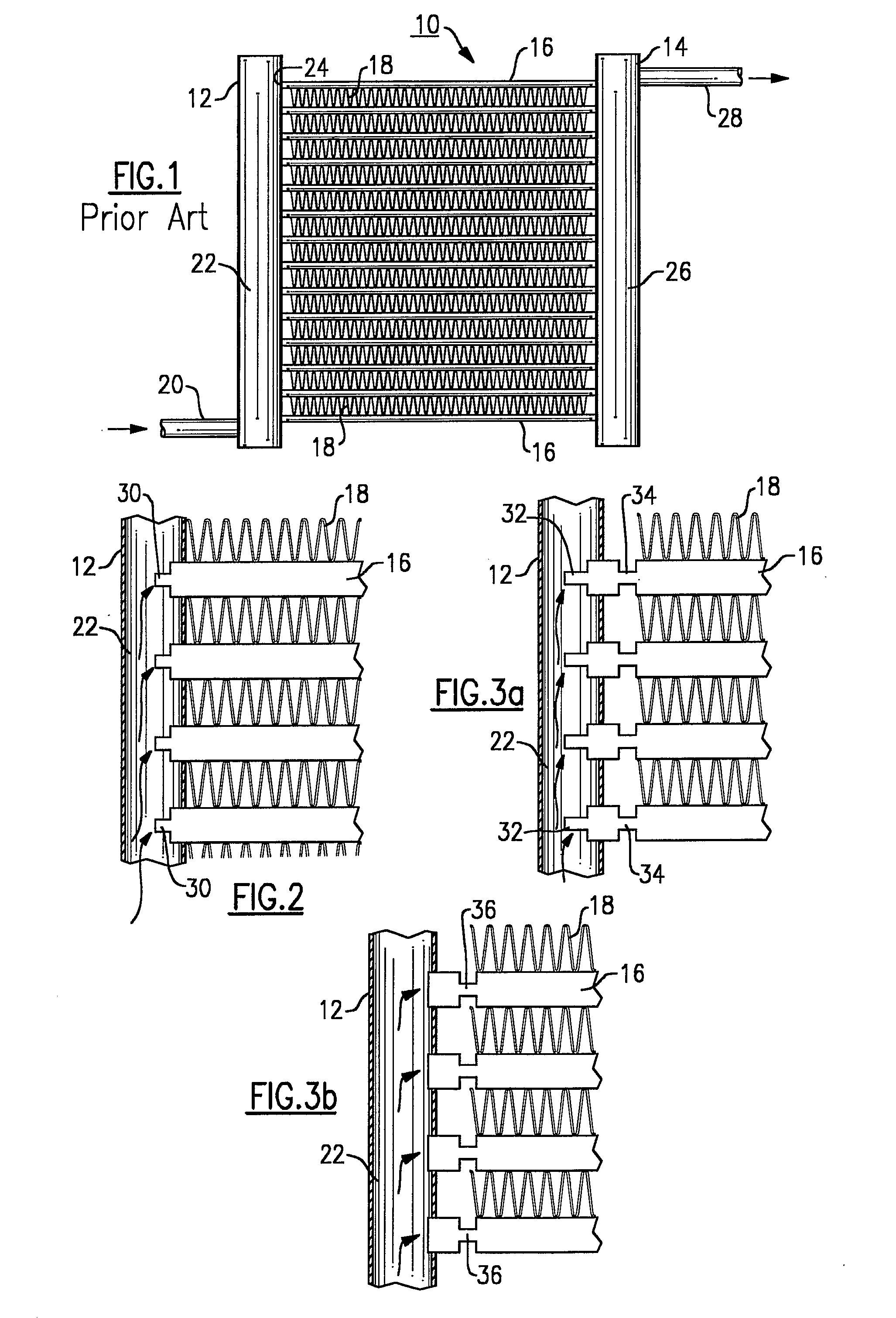Parallel Flow Heat Exchanger With Crimped Channel Entrance
- Summary
- Abstract
- Description
- Claims
- Application Information
AI Technical Summary
Benefits of technology
Problems solved by technology
Method used
Image
Examples
second embodiment
[0030]In the invention, as illustrated in FIG. 3a, the channels are crimped at the very end 32 and at a point 34, some distance away from the end and the attachment point to the manifold 12.
third embodiment
[0031]In a third embodiment, as illustrated in FIG. 3b, the channels are crimped at a single location 36, a predetermined distance from the channel end and, once again, away form the attachment point to the manifold 12, in order not to interfere with the attachment process.
fourth embodiment
[0032]In a fourth embodiment, as illustrated in FIG. 3c, the channels are crimped for a predetermined length or distance “L” near the channel ends but with less cross-section area alteration / reduction than in FIGS. 2, 3a and 3b.
PUM
 Login to View More
Login to View More Abstract
Description
Claims
Application Information
 Login to View More
Login to View More - R&D
- Intellectual Property
- Life Sciences
- Materials
- Tech Scout
- Unparalleled Data Quality
- Higher Quality Content
- 60% Fewer Hallucinations
Browse by: Latest US Patents, China's latest patents, Technical Efficacy Thesaurus, Application Domain, Technology Topic, Popular Technical Reports.
© 2025 PatSnap. All rights reserved.Legal|Privacy policy|Modern Slavery Act Transparency Statement|Sitemap|About US| Contact US: help@patsnap.com



